Volume 1-8 (2009-16)
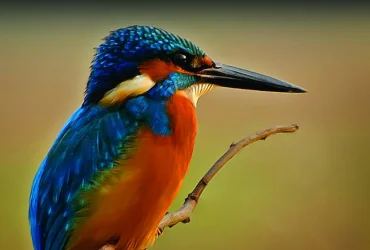 v7i4.205
v7i4.205ISSN: 1800-427X (print)
eISSN: 1800-427X (online)
DOI:10.47605/tapro.v7i4.205
Submitted date: 10 February 2015
Accepted date: 31 July 2015
Published date: 15 August 2015
Pp. 266–267, Pl. 12.
First record of Gynacantha millardi (Odonata: Aeshnidae) from Sri Lanka
T.M.T.S. Priyadarshana*, G.V.I.H. Wijewardana, N. van der Poorten & A.L.A.C. Jayasooriya
*Corresponding author. E-mail: tharakas.priyadarshana@gmail.com
Sri Lanka is a tropical island in the Indian Ocean, with a land area of 65,610 km2. In spite of its small size, the island has a variety of ecosystems with significant species diversity. There are 124 dragonfly and damselfly species identified from the island; 49.2% of them are endemic to Sri Lanka comprising 52 species and 9 subspecies. Although a listing of 124 species is substantial, not all species are common; some may be widespread and uncommon.
Section Editor: Jan van Tol
eISSN: 1800-427X (online)
DOI:10.47605/tapro.v7i4.205
Submitted date: 10 February 2015
Accepted date: 31 July 2015
Published date: 15 August 2015
Pp. 266–267, Pl. 12.
First record of Gynacantha millardi (Odonata: Aeshnidae) from Sri Lanka
T.M.T.S. Priyadarshana*, G.V.I.H. Wijewardana, N. van der Poorten & A.L.A.C. Jayasooriya
*Corresponding author. E-mail: tharakas.priyadarshana@gmail.com
Sri Lanka is a tropical island in the Indian Ocean, with a land area of 65,610 km2. In spite of its small size, the island has a variety of ecosystems with significant species diversity. There are 124 dragonfly and damselfly species identified from the island; 49.2% of them are endemic to Sri Lanka comprising 52 species and 9 subspecies. Although a listing of 124 species is substantial, not all species are common; some may be widespread and uncommon.
Section Editor: Jan van Tol
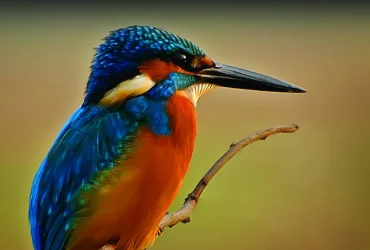 v7i4.204
v7i4.204ISSN: 1800-427X (print)
eISSN: 1800-427X (online)
DOI:10.47605/tapro.v7i4.204
Submitted date: 21 March 2015
Accepted date: 5 June 2015
Published date: 15 August 2015
Pp. 263–265.
A two-tailed Indian giant leaf-toed gecko (Hemidactylus giganteus)
G.C. Kumar* & C. Srinivasulu
*Corresponding author. E-mail: g.chethankumar@gmail.com
Tail autotomy is a common strategy for evading predators in lizards. It has been observed in 13 out of 20 lizard families. The ability to shed its tail increases a lizards chance of escape as the attention of the predator is drawn to the writhing or wriggling tail, while the lizard makes its escape. However, the loss of the tail can lead to a range of impacts on the lizard including a decrease in the lizard’s social status and increased vulnerability to predators in future.
Section Editor: John Rudge
eISSN: 1800-427X (online)
DOI:10.47605/tapro.v7i4.204
Submitted date: 21 March 2015
Accepted date: 5 June 2015
Published date: 15 August 2015
Pp. 263–265.
A two-tailed Indian giant leaf-toed gecko (Hemidactylus giganteus)
G.C. Kumar* & C. Srinivasulu
*Corresponding author. E-mail: g.chethankumar@gmail.com
Tail autotomy is a common strategy for evading predators in lizards. It has been observed in 13 out of 20 lizard families. The ability to shed its tail increases a lizards chance of escape as the attention of the predator is drawn to the writhing or wriggling tail, while the lizard makes its escape. However, the loss of the tail can lead to a range of impacts on the lizard including a decrease in the lizard’s social status and increased vulnerability to predators in future.
Section Editor: John Rudge
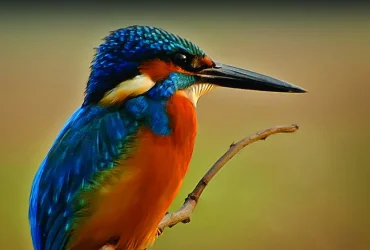 v7i4.203
v7i4.203ISSN: 1800-427X (print)
eISSN: 1800-427X (online)
DOI:10.47605/tapro.v7i4.203
Submitted date: 10 September 2014
Accepted date: 2 April 2015
Published date: 15 August 2015
Pp. 262.
Opportunistic feeding behavior of Nilgiri frog (Zakerana nilgirica)
J.L. Princy*, P. Kannan, P.S. Kumar, S. Nisha, B. Ramakrishnan, A. Veeramani, A. Samson & S. Karthick
*Corresponding author. E-mail: leonaprincymsc@gmail.com
A Dicroglossid frog, Zakerana nilagirica, has been observed opportunistically feeding on a Rhacophorid frog Raorchestes ravii Zachariah et al., 2011. Both species are endemic to the southern Western Ghats. Z. nilagirica is known from only two populations: Wayanad in Kerala and the Nilgiris in Tamil Nadu at 800–1600 m elevations while, R. ravii is known from a single locality, Nilgiris, Tamil Nadu at 1890 m elevation. Z. nilagirica is listed as Endangered.
Section Editor: Robert Stuebing
eISSN: 1800-427X (online)
DOI:10.47605/tapro.v7i4.203
Submitted date: 10 September 2014
Accepted date: 2 April 2015
Published date: 15 August 2015
Pp. 262.
Opportunistic feeding behavior of Nilgiri frog (Zakerana nilgirica)
J.L. Princy*, P. Kannan, P.S. Kumar, S. Nisha, B. Ramakrishnan, A. Veeramani, A. Samson & S. Karthick
*Corresponding author. E-mail: leonaprincymsc@gmail.com
A Dicroglossid frog, Zakerana nilagirica, has been observed opportunistically feeding on a Rhacophorid frog Raorchestes ravii Zachariah et al., 2011. Both species are endemic to the southern Western Ghats. Z. nilagirica is known from only two populations: Wayanad in Kerala and the Nilgiris in Tamil Nadu at 800–1600 m elevations while, R. ravii is known from a single locality, Nilgiris, Tamil Nadu at 1890 m elevation. Z. nilagirica is listed as Endangered.
Section Editor: Robert Stuebing
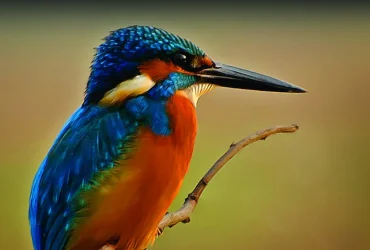 v7i4.202
v7i4.202ISSN: 1800-427X (print)
eISSN: 1800-427X (online)
DOI:10.47605/tapro.v7i4.202
Submitted date: 22 January 2014
Accepted date: 5 February 2015
Published date: 15 August 2015
Pp. 260–261, Pl. 11.
Notes on two Nymphalid butterflies new to Bangladesh
O. Shahadat, T. Ahmed*, A.K. Neogi, T. Khan & M.A. Khan
*Corresponding author. E-mail: shaikot2023jnu@gmail.com
Among the insects, butterflies occupy vital position in ecosystems and their occurrence and diversity are considered as an indicator of the health of any given terrestrial biotope. As herbivorous insects, the distribution of larval and nectar host plants has a distinct impact on the status of butterfly diversity. As a sub-tropical country, Bangladesh is a realm of biological diversity. However, in Bangladesh the butterfly fauna is not well documented. The most distinguished study has been carried out by Larsen. Considering the floral diversity and habitat variations, it is estimated that between 500 and 550 butterfly species should be present in Bangladesh. With the aim to document the diversity and distributions of butterflies, the present study was conducted in an area within the eastern region of Bangladesh.
Section Editor: Jeffrey Miller
eISSN: 1800-427X (online)
DOI:10.47605/tapro.v7i4.202
Submitted date: 22 January 2014
Accepted date: 5 February 2015
Published date: 15 August 2015
Pp. 260–261, Pl. 11.
Notes on two Nymphalid butterflies new to Bangladesh
O. Shahadat, T. Ahmed*, A.K. Neogi, T. Khan & M.A. Khan
*Corresponding author. E-mail: shaikot2023jnu@gmail.com
Among the insects, butterflies occupy vital position in ecosystems and their occurrence and diversity are considered as an indicator of the health of any given terrestrial biotope. As herbivorous insects, the distribution of larval and nectar host plants has a distinct impact on the status of butterfly diversity. As a sub-tropical country, Bangladesh is a realm of biological diversity. However, in Bangladesh the butterfly fauna is not well documented. The most distinguished study has been carried out by Larsen. Considering the floral diversity and habitat variations, it is estimated that between 500 and 550 butterfly species should be present in Bangladesh. With the aim to document the diversity and distributions of butterflies, the present study was conducted in an area within the eastern region of Bangladesh.
Section Editor: Jeffrey Miller
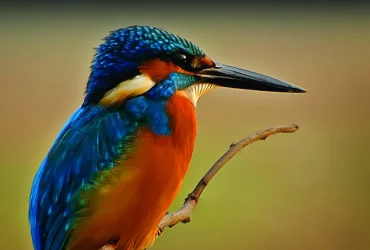 v7i4.201
v7i4.201ISSN: 1800-427X (print)
eISSN: 1800-427X (online)
DOI:10.47605/tapro.v7i4.201
Submitted date: 10 Sepetmber 2014
Accepted date: 2 April 2015
Published date: 15 August 2015
Pp. 258–259.
A note on deformities in the rosy starling (Pastor roseus), Telangana, India
B.L. Narayana*, G. Surender & V.V. Rao
*Corresponding author. E-mail: narayana.laxmi8@gmail.com
On 16th November, 2012, we observed a flock of nine individuals of the rosy starling (Pastor roseus), while conducting faunal surveys at Azmapur village (16.704987°N, 79.039952°E), Nalgonda District, Telangana State, India. The flock was found perching on a Prosopis juliflora tree (Fabaceae). All except three individuals were found with different abnormalities: two individuals had partially bald heads, without feathers on the neck, nape, head and crown regions, three individuals were totally/partially without feathers from the neck up to the crown region. In general, albinism, bill deformity and blindness were found among the individuals.
Section Editor: Varadharajan Gokula
eISSN: 1800-427X (online)
DOI:10.47605/tapro.v7i4.201
Submitted date: 10 Sepetmber 2014
Accepted date: 2 April 2015
Published date: 15 August 2015
Pp. 258–259.
A note on deformities in the rosy starling (Pastor roseus), Telangana, India
B.L. Narayana*, G. Surender & V.V. Rao
*Corresponding author. E-mail: narayana.laxmi8@gmail.com
On 16th November, 2012, we observed a flock of nine individuals of the rosy starling (Pastor roseus), while conducting faunal surveys at Azmapur village (16.704987°N, 79.039952°E), Nalgonda District, Telangana State, India. The flock was found perching on a Prosopis juliflora tree (Fabaceae). All except three individuals were found with different abnormalities: two individuals had partially bald heads, without feathers on the neck, nape, head and crown regions, three individuals were totally/partially without feathers from the neck up to the crown region. In general, albinism, bill deformity and blindness were found among the individuals.
Section Editor: Varadharajan Gokula
Hubungi Kami
The ultimate aim of the journal is to provide an effective medium for communication of the latest and best scientific information.
Copyright © 2020 Taprobanica. All Rights Reserved
Jasa Pembuatan Website by IKT




